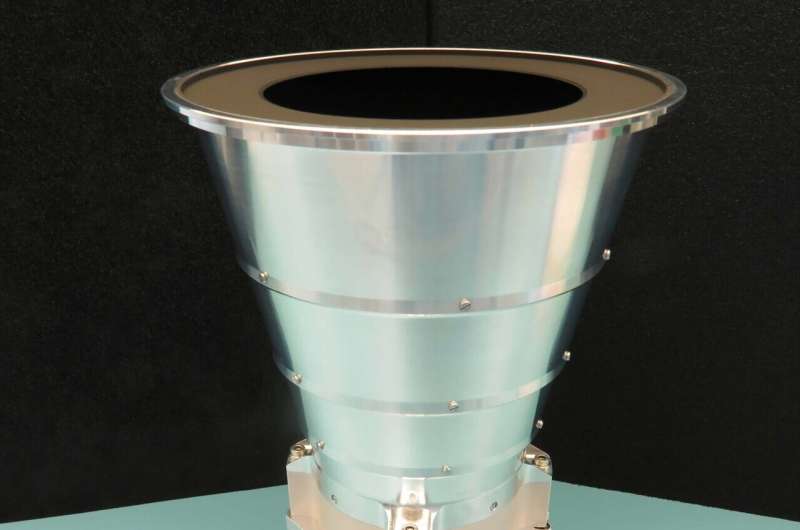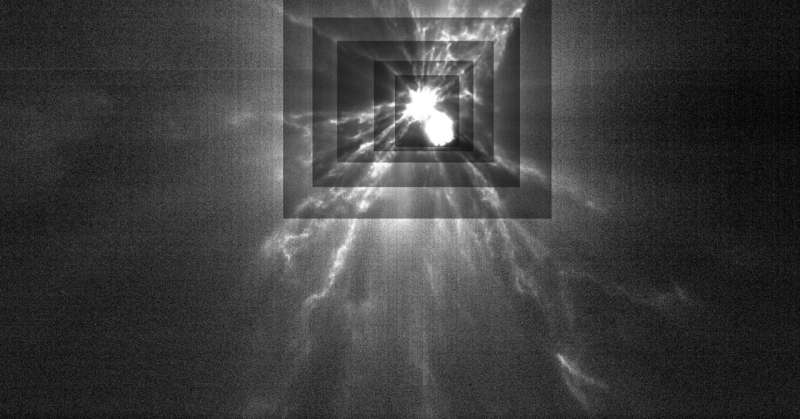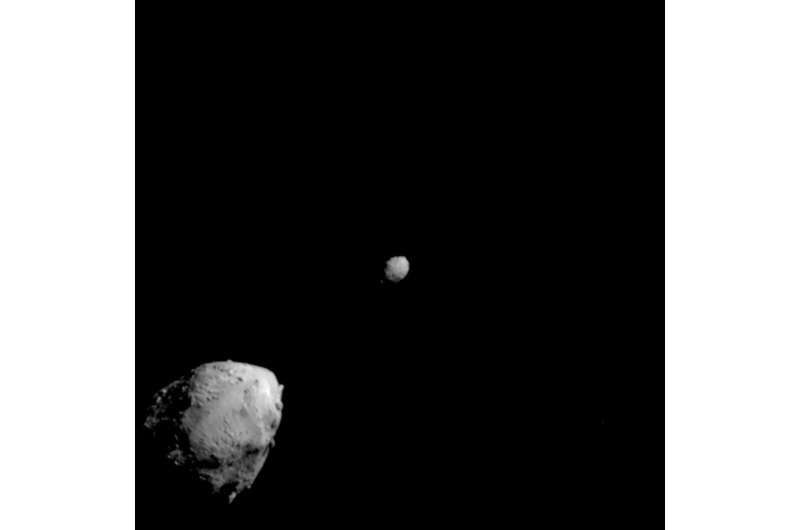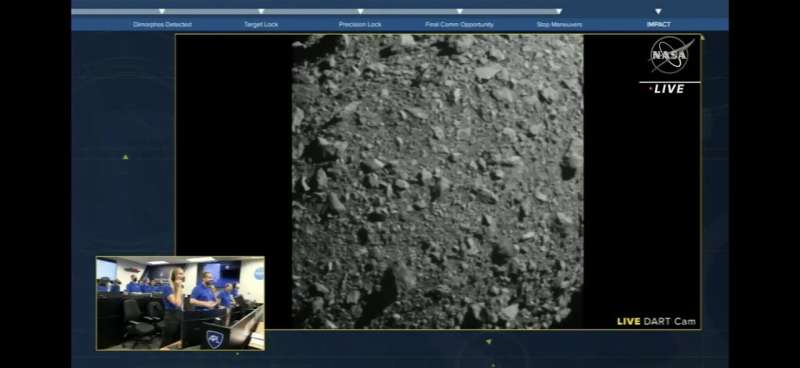This article has been reviewed according to Science X's editorial process and policies. Editors have highlighted the following attributes while ensuring the content's credibility:
fact-checked
trusted source
proofread
Eyes on Hera: Asteroid mission's cameras ready

ESA's Hera asteroid mission for planetary defense is about to gain its sight. Two complete and fully tested Asteroid Framing Cameras have reached OHB in Germany for integration aboard Hera's payload module. This instrument will provide the very first star-like view of Hera's target for the mission to steer towards the Dimorphos asteroid, which last year had its orbit altered by an impact with NASA's DART mission.
"It is a huge milestone to have the very first Hera payload ready for integration onto the spacecraft," says Hannah Goldberg, Hera system engineer. "And the Asteroid Framing Camera, AFC, is not only our first payload, but also the most important, since by itself it can obtain all the mission's core goals. Hera payloads are arranged with core and opportunity objectives in mind—based firstly on the data we have to acquire, then the secondary results we seek to obtain whenever possible.
"Our October 2024 launch date is creeping ever closer, but the mission subsystems are beginning to come together as planned. So the next time we'll see these cameras will be aboard the complete Hera flight model when overall spacecraft testing begins this autumn."
Hera is Europe's contribution to an international planetary defense experiment. Following the DART mission's impact with the Dimorphos asteroid last year—modifying its orbit and sending a plume of debris thousands of kilometers out into space—Hera will return to Dimorphos to perform a close-up survey of the crater left by DART. The mission will also measure Dimorphos' mass and make-up, along with that of the larger Didymos asteroid that Dimorphos orbits around.

Operated on a redundant basis—meaning one unit will be kept in reserve in case of failure—the AFC will play a pivotal role in Hera's mission. As well as acquiring detailed views of the surface of Dimorphos for scientific analysis, including the crater left by the DART impact, the AFC will also be used for guidance, navigation and control.
The AFC will home in on Dimorphos when it is still a single point of light in the sky—seen in conjunction with the larger asteroid Didymos. The AFC will then transition to close-up navigation, utilizing edge detection to keep the asteroid centered in its field of view while tracking surface features to derive Hera's exact position from the asteroid in a similar manner to self-driving car software.
Around the same size and shape as a household vase, the 1.3 kg AFC has been designed, manufactured and tested by Jena-Optronik in Germany. The compact design with its long baffle to protect the camera's optics from sunglare shares heritage with the startracker units that Jena-Optronik specializes in—utilized to map the stars around a spacecraft in order to pinpoint its position in space.

Steffen Schwarz, Head of Marketing & Sales at Jena-Optronik, comments: "Hera is a prestigious mission and we at Jena-Optronik are looking forward to make a decisive contribution to its success through our camera."
Possessing a 5.5 degree field of view, the monochromatic AFC acquires images using complementary metal–oxide–semiconductor active pixel sensor (CMOS APS) technology—an advanced, rad-hardened version of the imaging used in modern smartphone cameras—the FaintStar2 detector chip marketed by Caeleste in Belgium, initially designed for startrackers through a project in ESA's General Support Technology Program.
"The images we will see from the AFC will resemble those returned by DART before its impact," adds Hannah. "For example, the picture we saw of the two asteroids together in DART's field of view, and then later on the boulder-strewn surface of Dimorphos as DART was about to collide.

"The AFC's images will be complemented by color images from other instruments, including Hera's HyperScout instrument which will see in 25 different colors and the ASPECT hyperspectral imager aboard the Milani CubeSat, whose vision will extend beyond visible light into the infrared."
Other Hera subsystems are currently being finalized: Hera's laser-based PALT (Planetary Altimeter) coming from Portugal; the HyperScout2 imager from the Netherlands; the Milani CubeSat from Italy and the Juventas CubeSat from Luxembourg; and the TIRI thermal imager contributed by Japan.
Provided by European Space Agency





















